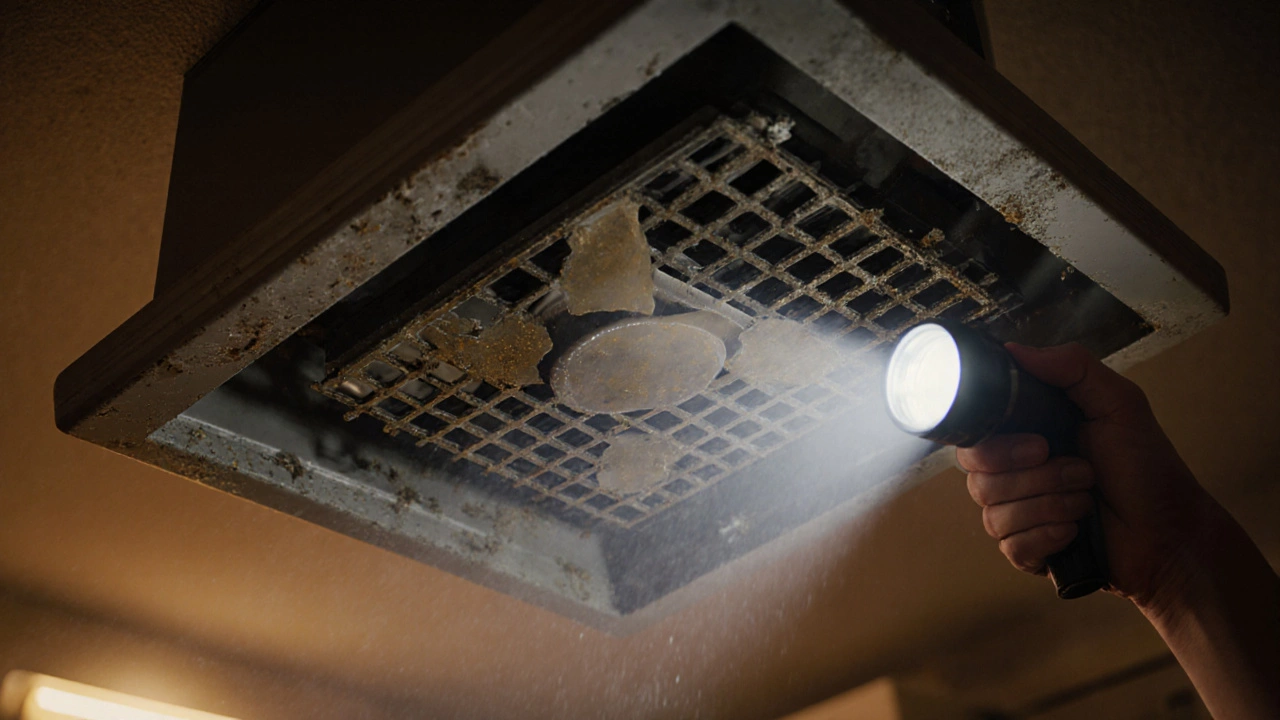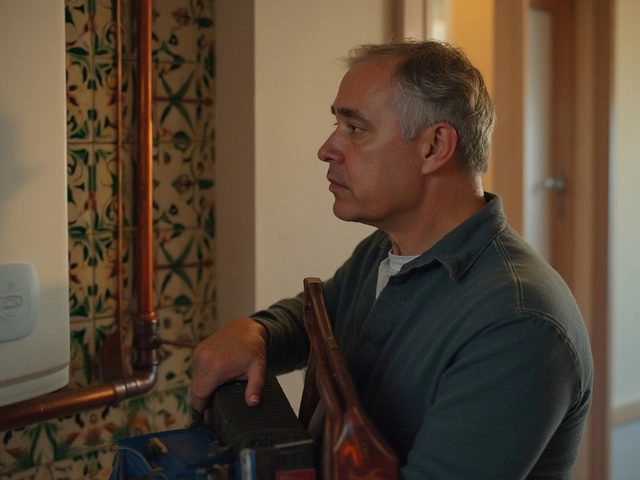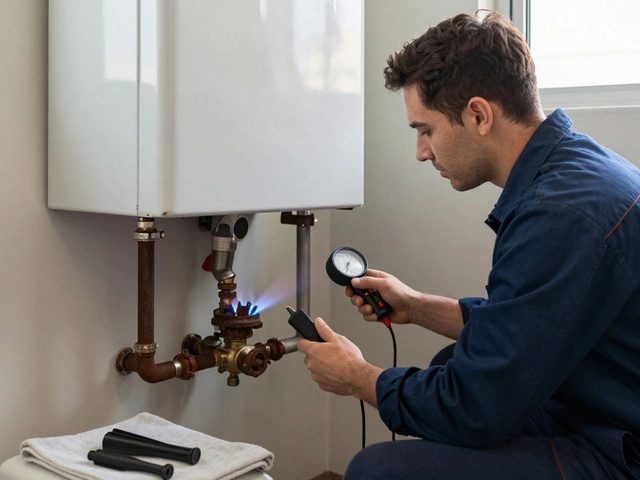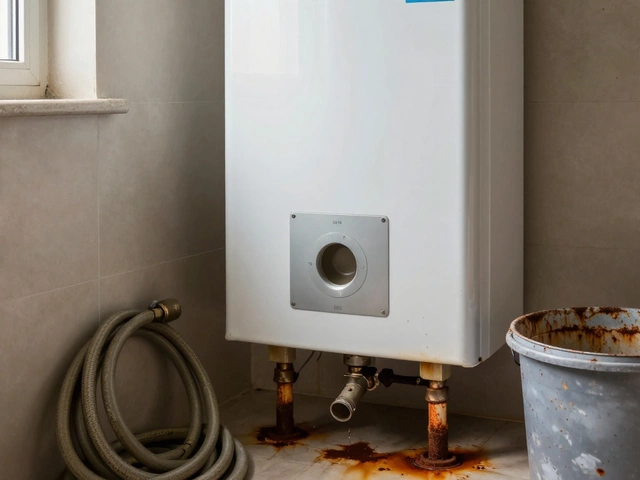Extractor Fan CFM Calculator
Required Airflow Calculator
Calculate the recommended CFM for your kitchen or bathroom based on room size
A good rule of thumb is 1 CFM per square foot of floor area plus an extra 50 CFM for a kitchen or 25 CFM for a bathroom.
When your Extractor fan is silent, sluggish, or blowing weakly, daily cooking and shower routines turn into a hassle. Before you call a professional, you can run through a quick checklist that often solves the problem on the spot.
Quick visual scan: the first 5 minutes
Grab a flashlight and look at the fan housing. Is there visible dust, grease buildup, or a broken blade? A layer of grime can choke the motor in as little as a few weeks. If you see anything sticky, turn the fan off at the wall, remove the front grille, and wipe the interior with a damp cloth. While you’re at it, check the Ductwork for obvious blockages - a crushed or kinked section will quiet the airflow instantly.
Power check: circuit, fuse, and switch
Most fans are wired to a wall switch and a dedicated fuse or circuit breaker. Flip the switch off and on a couple of times; sometimes a loose contact is the culprit. Then head to your breaker box: look for a tripped breaker or a blown fuse labeled “kitchen fan” or “bathroom fan.” Reset the breaker or replace the fuse, then test the fan again. If it still won’t spin, you’ve likely narrowed the issue to the fan’s internal components.
Motor health: listening for clues
Turn the fan on briefly and listen. A humming sound without rotation usually means the motor is receiving power but the bearings are seized. A high‑pitched squeal points to a worn‑out motor bearing or a misaligned shaft. In either case, the motor needs cleaning or replacement. Carefully remove the motor housing (usually two screws), and inspect the Motor for burnt smells or frayed wires.
Switch types and thermostats
Some extractor fans are wired to a Thermostat switch that only powers the fan when humidity reaches a set level. If the sensor is faulty, the fan may think the room is dry and stay off. Test the fan by bypassing the thermostat - connect the fan wires directly to the power source (make sure the mains is off first!). If it runs, replace the thermostat.
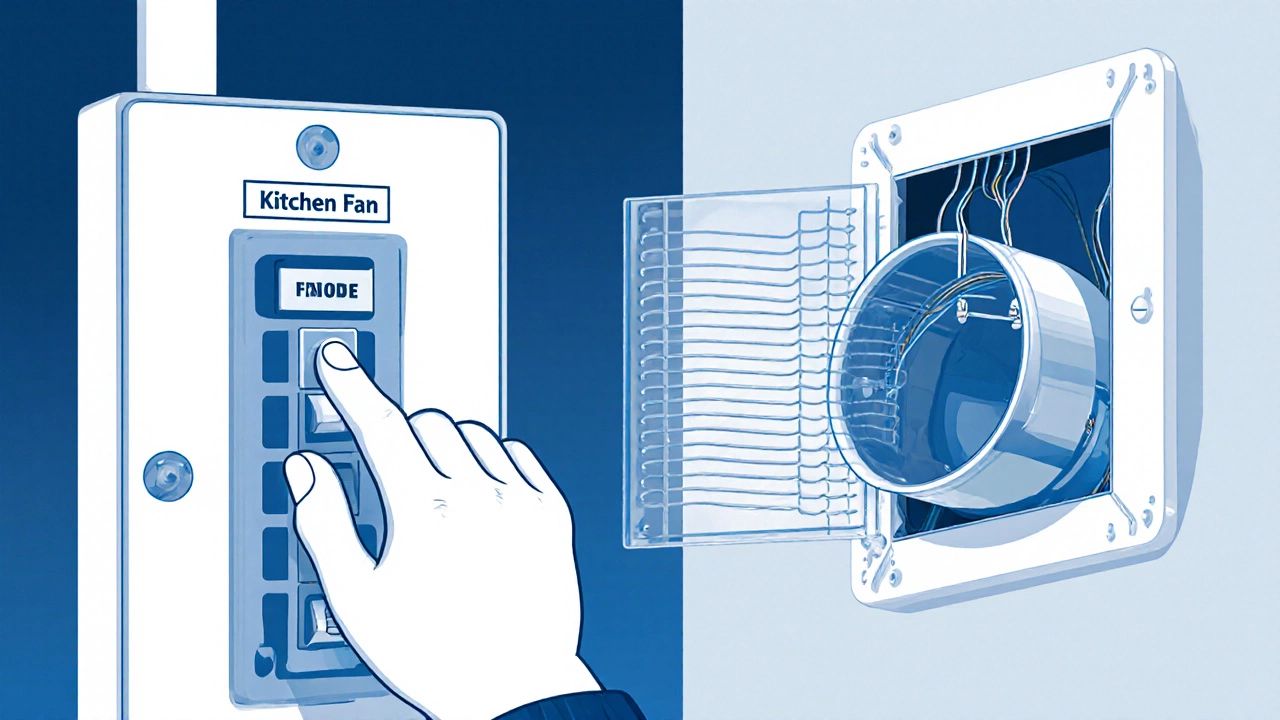
Cleaning the fan blades and motor fan wheel
Even a brand‑new fan can lose performance if debris sticks to the blades. Remove the Ceiling vent or Wall‑mounted fan cover, then unscrew the blade assembly. Soak the blades in warm, soapy water, rinse, and let dry completely before re‑installing. While the blades are off, spin the motor fan wheel by hand; it should turn smoothly.
When to consider an Inline fan upgrade
If your current fan is small for the room size, you might be fighting a losing battle. An inline fan placed in the attic or crawl space can move larger volumes of air without the noise of a ceiling unit. Compare the airflow rating (CFM - cubic feet per minute) of your existing fan with the room’s required CFM: a good rule of thumb is 1 CFM per square foot of floor area plus an extra 50 CFM for a kitchen.
Comparison table: common fan types and typical issues
| Fan type | Typical CFM range | Common failure point | Best fix |
|---|---|---|---|
| Ceiling vent | 80-200 | Grease buildup on blades | Monthly cleaning + blade inspection |
| Wall‑mounted fan | 50-150 | Loose wiring at wall switch | Secure connections, replace faulty switch |
| Inline fan | 150-500 | Over‑heated motor | Upgrade motor, ensure adequate ventilation |
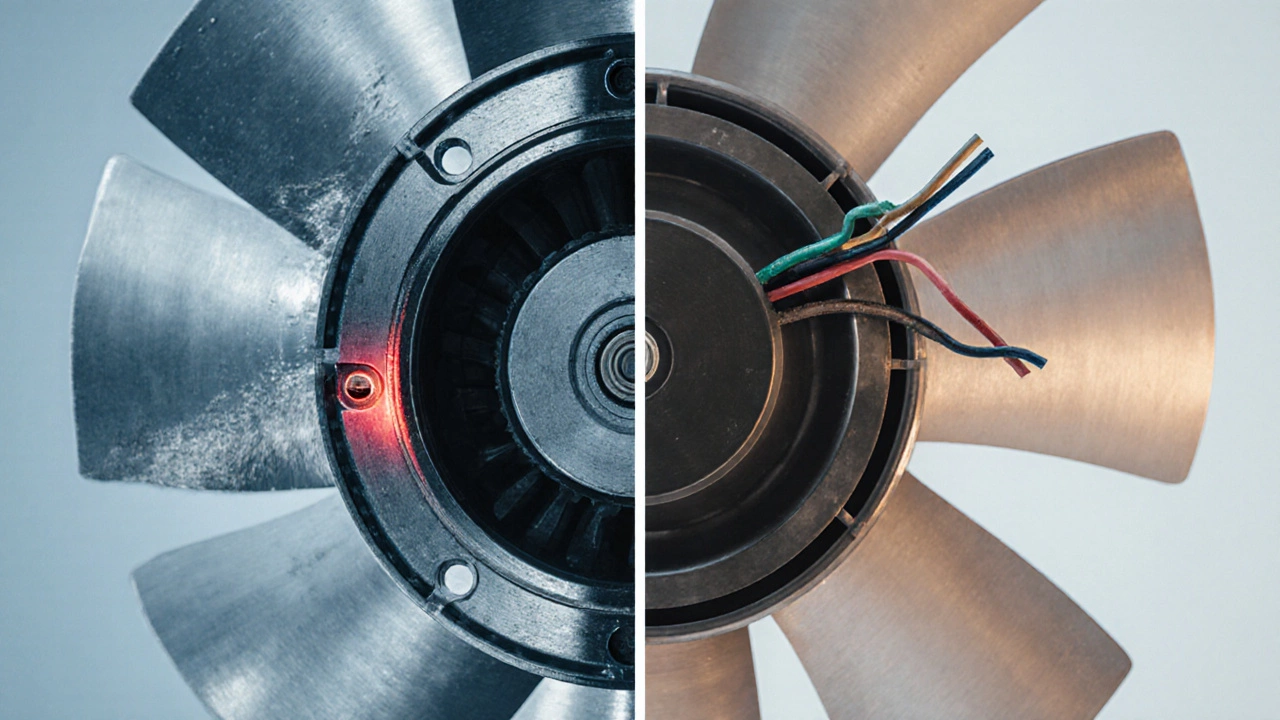
Step‑by‑step troubleshooting checklist
- Turn off power at the breaker.
- Remove front grille and inspect for dust or grease.
- Check the Fuse or circuit breaker for a trip.
- Listen for motor hum; if silent, verify power at the fan terminals with a multimeter.
- Inspect the Motor for burnt wires or overheating.
- Test the thermostat switch (if present) by bypassing it safely.
- Clean blades, fan wheel, and duct inlet.
- Re‑assemble, restore power, and run the fan for a minute.
Pro tips to keep your fan humming
- Schedule a quick wipe‑down after every heavy‑cooking session.
- Install a removable grease filter if your fan doesn’t have one.
- Check the Noise filter (often a rubber gasket) for cracks that let air bypass the motor.
- Upgrade to a fan with a higher CFM rating when you remodel or expand the kitchen.
- Keep the exterior vent clear of leaves and debris - a blocked vent can cause the motor to overheat.
When DIY stops and you call a professional
If the motor still won’t spin after cleaning, or you discover burnt wiring, it’s time to call an experienced electrician or licensed fan repair technician. Faulty wiring can be a fire hazard, and a professional can safely replace the motor or wiring harness. In Brisbane’s humid climate, a well‑maintained fan can last 8-10 years, so investing in proper repair now saves you from a costly replacement later.
Why does my extractor fan make a loud rattling noise?
A rattling fan usually means a loose blade, worn bearing, or debris caught in the motor. Turn off the power, remove the grille, and tighten any loose screws. If the noise persists after cleaning, the bearing likely needs replacement.
My fan runs but the airflow feels weak. What gives?
Weak airflow is often caused by clogged blades or a blocked duct. Clean the fan blades and check the external vent for obstructions. If airflow remains low, verify the fan’s CFM rating matches the room size; an undersized fan will never move enough air.
Is it safe to bypass the thermostat switch for testing?
Yes, as long as the mains power is switched off at the breaker and you use proper insulated tools. Connect the fan’s live and neutral wires directly to a temporary power source, observe if it runs, then restore the thermostat afterward.
How often should I clean my extractor fan?
Aim for a light cleaning every 1-2 months and a deep clean (including motor and duct) twice a year, especially after heavy cooking seasons.
Can a blown fuse cause the fan to spin slowly instead of stopping?
A partially blown fuse can limit voltage to the motor, resulting in sluggish performance. Replace the fuse with the same amperage rating and test the fan again.
